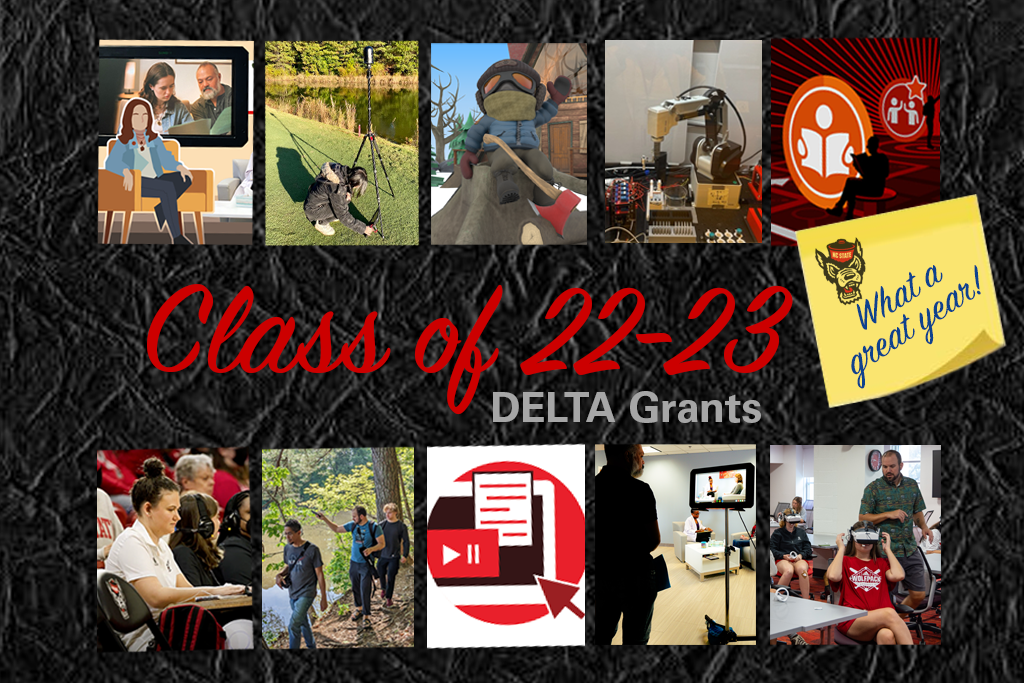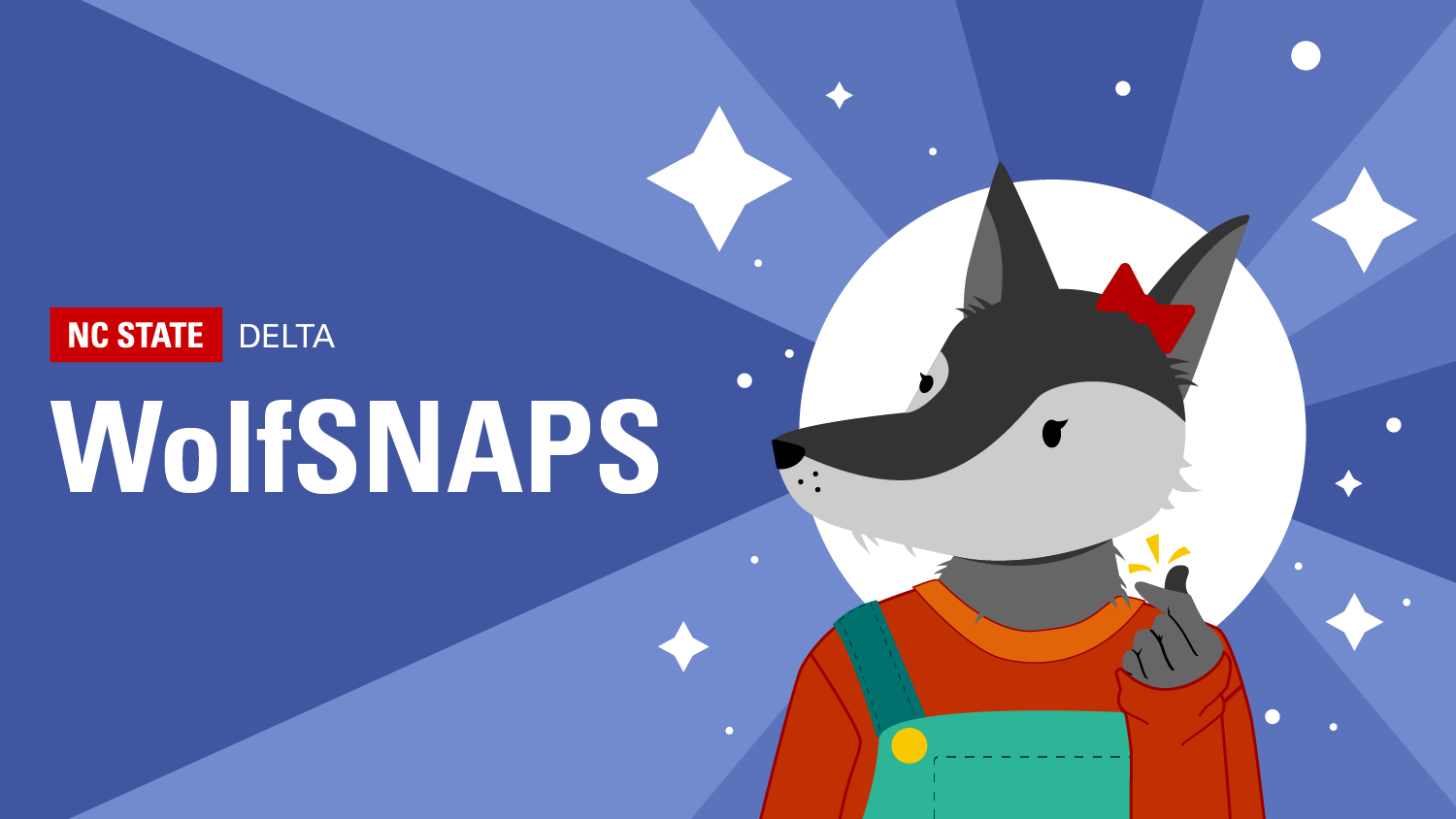SLOAN-C Conference Wrap-up
On Wednesday, November 3, I found myself at the RDU airport at 6:15am (not sure how I got there, it was early!) going through security and then waiting for my flight to Orlando on my way to the 16th annual SLOAN-C conference. After an uneventful flight (my favorite kind), and a shuttle to the hotel, it was time to get settled in and hit the ground running for this conference.
First things first – getting ready for my presentation with colleague Dr. Diane Chapman that very afternoon (Top Gear: Driving Your LMS Transition for Student Success), which was based on a survey of students and faculty in our department (Leadership, Policy & Adult and Higher Education) around the transition issues they are experiencing in moving from Blackboard Vista to Moodle. After meeting for lunch and a quick review of our material, we were ready to go!
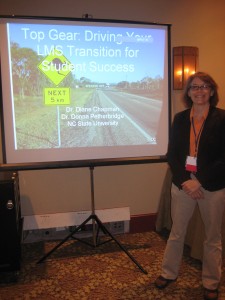
I then headed off to my first conference session of the afternoon, entitled Orientation Modules for Online Education: Guiding Learners to Success in Online Courses, with speakers from a college and a university in New Jersey. They decided to develop online orientations for their students (and all students are encouraged, but not required) to complete the orientation prior to taking a distance education (DE) course in order to give students a chance to try the technology and understand some of the expectations for an online environment. The key takeaway that I had from this session is that they feel there online orientation has been successful because they got the content and buy-in from a cross-section of their DE instructors (rather than just having their support staff design the orientation). The speakers also mentioned that after doing this for three years, it was important to make the orientation more of an awareness of students for where to get help when they needed it rather than trying to cover any particular technology or content in depth. They also noted that they back up and archive their orientation annually as a way to keep things tidy (there orientation resides in Blackboard, which is the system they use as their Learning Management System (LMS) platform).
After that, it was time for a session on Building Cohesive Teams: a Brief Research Review and Application. Online group/teamwork is an interest of mine, as I use online teams extensively in the course that I teach (am actually working on a blog post about this, too – but that is for another day). And using online teams is a fairly popular methodology; after all, in today’s world students are headed to workplaces that will make use of virtual teams, and thus practice collaborating with others is probably not a bad thing. This session affirmed some of the research I’ve read and experiences that I’ve had in working with online groups; that is, if you can facilitate a cohesive team that has buy-in to the activity, then teams can work well; and you can do this by following the VIST guidelines:
-
Valence – provide the team clear goals and help students identify with them.
Instrumentality – find ways for students to illustrate how they personally contribute to the teamwork and how their role is visible
Self-efficacy – provide ways for teams/individuals to have small successes before you get to the big ones (e.g. small projects first to prepare and orient for larger ones
Trust – reward students for their efforts and encourage reciprocity among teammates
The speaker noted that in his particular course experience, the teams that met regularly produced a far better product than those that just divided up the work and then turned it in – so encouraging teams to meet and providing structure for that is probably important.

It was then time for Diane and I to meet in the speaker preparation room and test our technology for our section. After making sure that Diane’s laptop and the projection system were on good terms, we headed out to give our presentation. We were very pleased with how our session went, and we had great questions asked, and a line of people to talk to us once we finished the formal session; thus we feel we hit the mark with what we were discussing. Our PowerPoint and handout will be available on the SLOAN-C website sometime in November as part of the permanent conference record, if you would like to take a look at our work. Key takeaways from our research included (a) student’s want instructors to get training and support in using LMSs because if instructors do not use the tools well, students are frustrated, and (b) instructors may not want training; rather, they want more “just in time” help and an easy to use design to help them “drive” the LMS.
After our session, we spent a bit of time in the Exhibit hall, and then headed to the keynote session at 4:30pm. The keynote speaker, Dr. Peter Smith, Senior VP of Academic Strategies and Development, Kaplan Higher Education, talked about a number of the same trends/ideas that I recently heard at Educuase; including the impact of networking, the unbundling of higher education services, and a focus on learning outcomes/performance as opposed to credit hours. He talked quite a bit about the need for better portability of courses (e.g. you waste a lot of funds making a student take the same course at three institutions), and the university’s role in creating “merit in an age of abundance.” Abundance? Really? It’s a recession . . . but he was talking about abundance in terms of there are no scarcity of “experts,” and no scarcity of places to learn – so how do we create merit for our own programs. See the article on A New Ecology of Learning to get a good idea of what Peter discussed at his session.
After the keynote, more time in the exhibit hall with a welcome reception, then off to the evening dinner. A good day all round!
For me, there were several interesting sessions on Thursday. One was Mobile Learning: Course Management Systems for Mobile Phones – I went to this session thinking I’d like to know a bit more about possible plugins for Moodle that allow for better interaction with Moodle over mobile devices. The speakers had put together a list of plugins for various systems, Moodle included, that they indicated they had tested and that worked well for them; see https://sites.google.com/site/mobilecmspres/home.
Another was Blogs at a Glance: A Blog Visualization System on Moodle. I found this interesting because the speaker was from a Japanese University and they were teaching an English as a Second Language class, and they wanted to help students better “visualize” their presence in the course, specifically as the students interacted with blogs. They developed a tool that allows you to see your blog post almost in what I would describe as a calendar entry view – and you could thus get a better idea of how often you were participating in addition to what you were posting. Comparative research they have done illustrated that the group using the visualization module had higher level learning outcomes, compared to the group that did not, in an ESL course. They don’t really have this tool online where you can access it, but I did get their email info in case we decide to take a look at this – and if they decide they’ll make it more widely available as right now it appears to be more of a local project.
I also very much enjoyed a session called Student Perceptions of Important Instructor Behaviors in Online Courses. The presenters were quite thoughtful in their research approach, and had surveyed 65 graduate students regarding the types of online instructor behaviors that were most important to their success in the course. A concept mapping they did of success indicators included the following clusters:
-
The setup of the class; creating a course that is easy to navigate and providing access to resources, creating clear requirements
Communication: how and when you communicate with the students – what communication they expect such as some participation in the class discussions, and being timely in your responses to the students
Instructor attributes: positive/friendly, knowledgeable, empathetic, and consistent
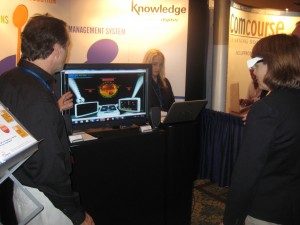
Overall, the presenters (who are currently waiting to see whether or not their research will be published in JOLT), indicated that students would like to see online instructors that set clear expectations and then clarify anything that isn’t clear for the students, are responsive to the student needs, and who interact well with the students with a friendly demeanor.
I also stopped in on a session called Making the Move: Just How Easy is it to Switch Learning Management Systems – just to see if there were any tidbits to glean from this. I don’t think switching from one thing to another is “easy” in any case because of issues of time, familiarity and just the general process of change management. I didn’t find anything new in this particular session, but one thing that one of the speakers said really resonated with me a takeaway that relates to what we are tried to do with the Moodle decision/implementation and now with the LMS governance structure – and that was around making things as transparent as possible; knowing that when decisions are made by a small group of people rather than through an informed discussion of a larger group, implementation becomes harder because resistance and concerns are dealt with on the implementation end instead of the input-gathering end of the process.
Thursday also included my favorite part of just about any conference; the poster sessions. My colleague Diane Chapman presented her poster on Training Gone Digital: Strategies for Hosting and Learning in Web-Based Seminars, which provided some very practical takeaways for facilitators and participants to consider when participating in online conferencing. There was a really neat poster called Get 2 It: A Six-Pack of Free Online Tools for Collaborative Research that was eye-catching and fun, with links to tools such as wikispaces, eyePlorer, Zotero, Diigo, Google Apps and Wiggio that can be used for collaboration. Another poster, BUILD: 5 Simple Ways to Foster Strong Connections with Online Students also contained practical advice for online instructors, including being attentive to your students, understanding their position (e.g. knowing they have other things in life besides school), including students when possible in on-campus happenings, listening to student concerns, and directing the students to the appropriate individuals that can help them when they have an inquiry.
After a bit more networking with colleagues from other universities on Friday, it was time to fly home. Enjoyed SLOAN-C this year, was happy to have a chance to present, to pick up a few new ideas, and then to largely confirm that the work we are doing at NC State in the online learning area is often aligned with or ahead of the pack in many areas. In attending the SLOAN-C awards luncheon on Thursday – I kept thinking that some of our programs and faculty should be getting some of these awards, so we need to look into how we can go after some of these awards.
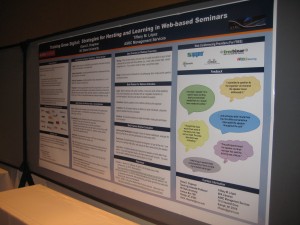
- Categories:
